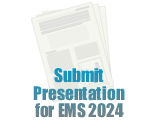Best Management Practices for Environmental Laboratories
Oral Presentation
Prepared by A. Mudambi, J. Griggs
US Environmental Protection Agency, 1200 Pennsylvania Ave NW, Washington, DC, 8101R, United States
Contact Information: [email protected]; 202-564-2817
ABSTRACT
Method validation is an important aspect of establishing chemical and radiochemical laboratory methods. EPA methods used for regulatory purposes rely on program-specific assessment criteria and documentation to guide the conduct of method validation studies. However, EPA also has wide-ranging needs for developing/modifying and validating laboratory methods for non-regulatory purposes to address measurement gaps for both current and emerging contaminants of concern. EPA is developing a document to provide a consistent general approach for the validation and communication of newly developed, adopted (e.g., from another agency, voluntary consensus standard development body such as ASTM International, not previously validated, etc.), or modified chemical and radiochemical methods for non-regulatory purposes. Specifically, this document will provide collected information on critical areas of method performance assessment for validation studies. This document also introduces the following new concepts:
• Lifecycle of a method, which identifies the typical activities a method goes through during its development and use.
• Validation Design, which is a short descriptor indicating the number of laboratories and matrices in a validation study.
• Method Validation Summary, which is designed to provide consistency in delivery of summary method validation results in a concise, easy-to-prepare and share format.
Use of this guidance will assist the Environmental Protection Agency (EPA) in both validating methods for non-regulatory purposes and communicating the results in a consistent manner, allowing them to be used or further developed for other purposes. It will also serve to assist external parties that develop methods to communicate their method validation results in a standard format to make comparisons between similar validation studies easier.

